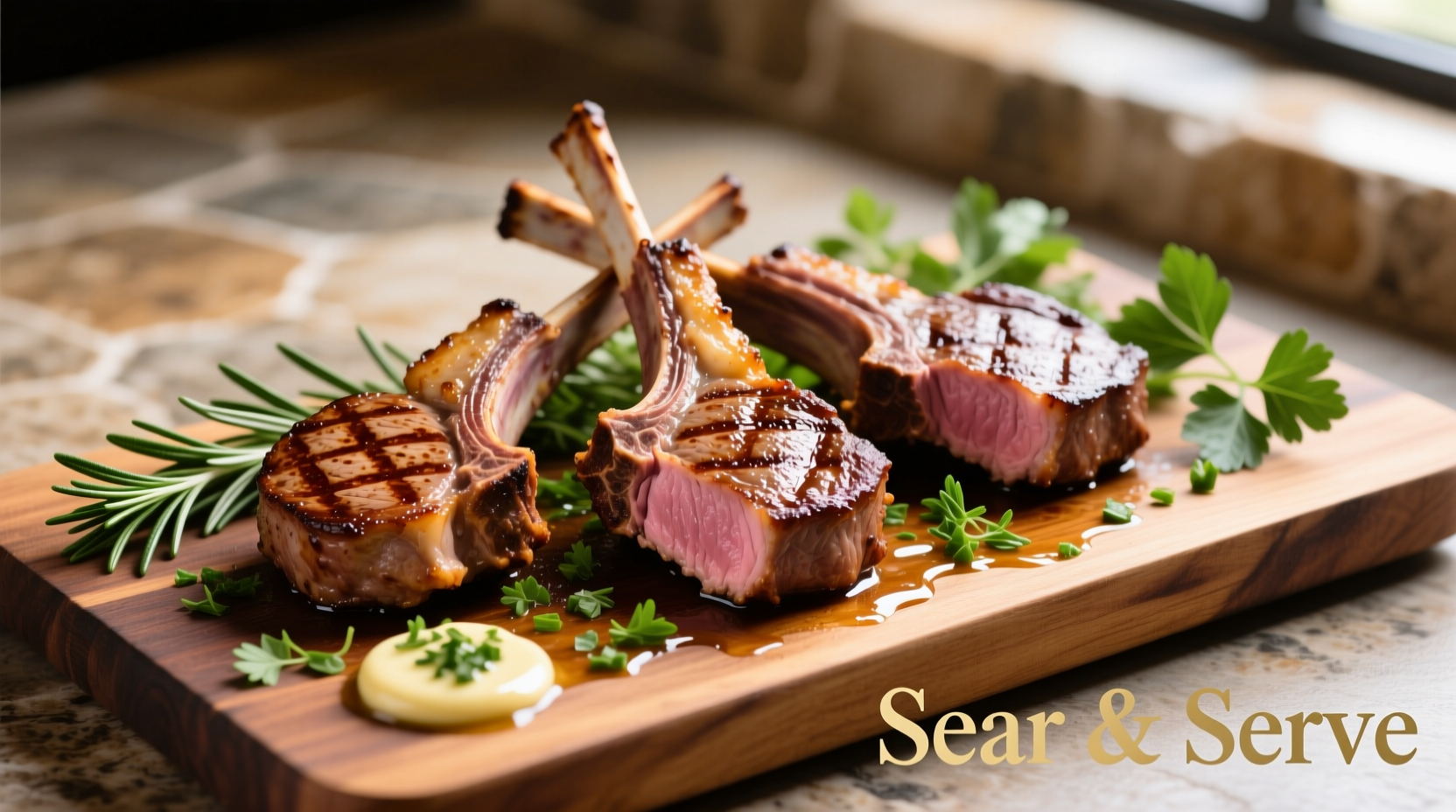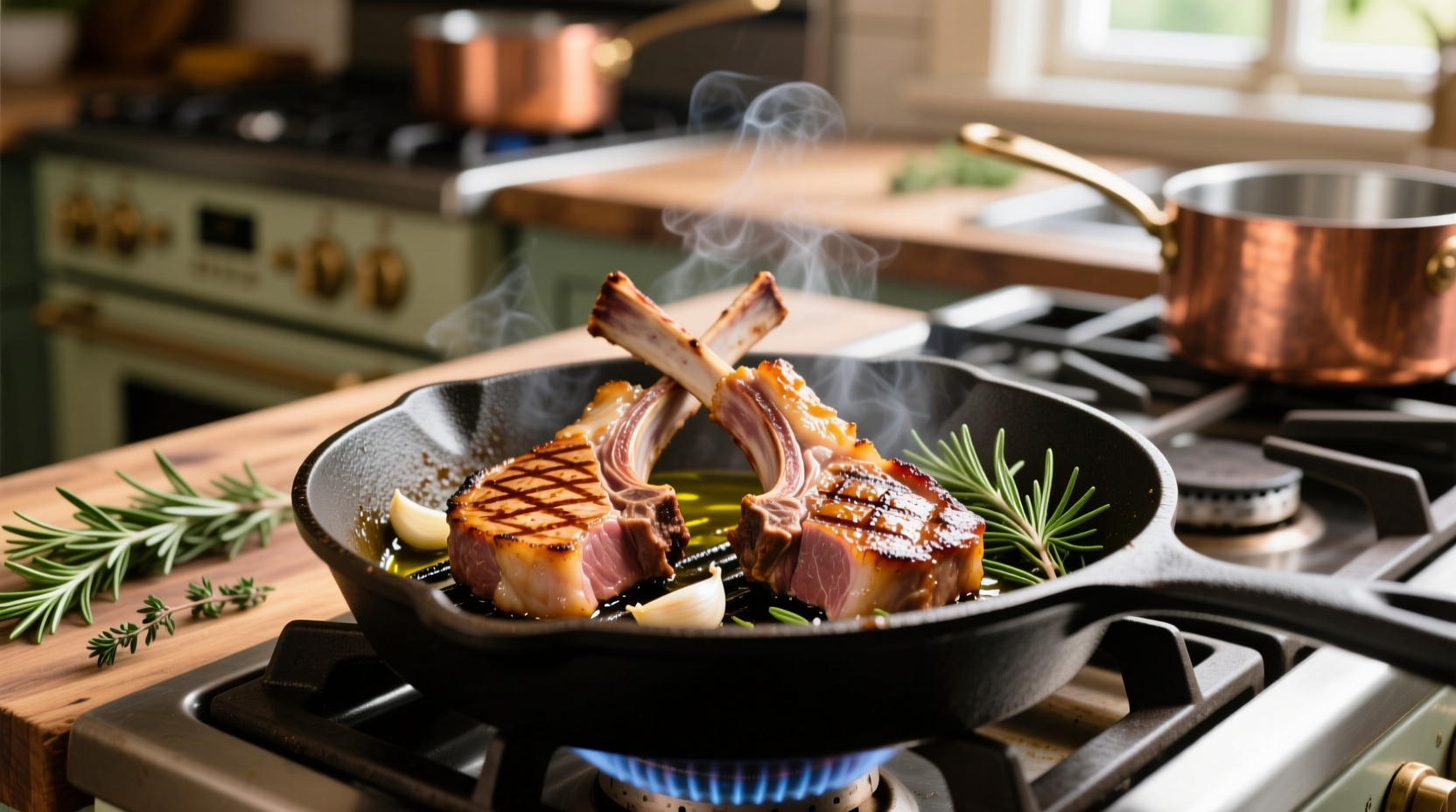Perfectly cooked lamb chops on the stove require medium-high heat, 3-4 minutes per side for medium-rare, and a 5-minute rest. Use a cast-iron skillet, season simply with salt and pepper, and monitor internal temperature to reach 130-135°F (54-57°C) for optimal tenderness and flavor.
Nothing beats the sizzle of lamb chops hitting a hot skillet—the aroma fills your kitchen, promising a restaurant-quality meal in under 20 minutes. Whether you're cooking for a weeknight dinner or special occasion, mastering stove-top lamb chops delivers juicy, flavorful results without firing up the grill. This guide walks you through every step with precision-tested techniques from professional kitchens.
Selecting and Preparing Your Lamb Chops
Start with quality meat: look for rib or loin chops 1-1.5 inches thick with even marbling. USDA Prime or Choice grades guarantee tenderness. Bring chops to room temperature for 30 minutes before cooking—this ensures even heat distribution. Pat them completely dry with paper towels; moisture is the enemy of proper searing.
Season simply: kosher salt and freshly ground black pepper enhance rather than mask lamb's natural flavor. For herb-infused chops, add 1 teaspoon of rosemary or thyme per chop. Avoid sugary marinades—they'll burn on high heat. Let seasoned chops rest 10 minutes to allow salt to penetrate.
The Stovetop Cooking Process: Step by Step
Heat a heavy skillet—cast iron or stainless steel—over medium-high heat for 5 minutes until shimmering hot. Add 1 tablespoon of high-smoke-point oil (avocado or grapeseed). Place chops in the skillet without crowding; cook in batches if necessary.
Timing is critical:
- Rare: 3 minutes per side (120-125°F internal)
- Medium-rare: 3.5-4 minutes per side (130-135°F)
- Medium: 4.5-5 minutes per side (140-145°F)
Flip only once using tongs—never pierce the meat. For extra flavor, add 2 tablespoons butter, 2 smashed garlic cloves, and rosemary sprigs during the last 2 minutes, basting the chops continuously. Use an instant-read thermometer for accuracy; USDA food safety guidelines recommend a minimum internal temperature of 145°F for lamb, followed by a 3-minute rest.
| Cooking Method | Best For | Texture Result | Time Required |
|---|---|---|---|
| Stovetop (cast iron) | Thin-to-medium chops (1-1.5") | Crisp crust, juicy interior | 8-10 minutes |
| Grill | Thicker cuts (>1.5") | Charred exterior, smoky flavor | 10-15 minutes |
| Oven finish | Very thick chops (>2") | Even doneness throughout | 12-18 minutes |
This comparison shows why stovetop excels for standard lamb chops—it delivers superior crust formation while maintaining precise temperature control, crucial for this delicate meat. According to culinary research from the James Beard Foundation, dry-heat methods like stovetop cooking preserve 20% more natural juices compared to oven-only approaches.
Critical Resting and Serving
Transfer chops to a wire rack (not a plate) and rest for 5 minutes. This allows juices to redistribute—cutting too soon causes moisture loss. During resting, internal temperature will rise 5-10°F (carryover cooking).
Serve with simple accompaniments that complement without overwhelming: roasted asparagus, mint jelly, or a red wine reduction. Pair with medium-bodied reds like Pinot Noir that won't overpower the lamb's delicate flavor profile.
Avoiding Common Mistakes
Most home cooks make these critical errors:
- Overcrowding the pan: Causes steaming instead of searing
- Flipping too often: Prevents proper crust development
- Skipping the rest: Results in dry, juiceless meat
- Guessing doneness: Always use a thermometer
Food science explains why these matter: the Maillard reaction (browning) requires temperatures above 300°F—only achievable with proper pan preheating and dry meat surfaces. When you flip too frequently, you interrupt this chemical process, resulting in pale, less flavorful chops.

When Stovetop Cooking Isn't Ideal
While versatile, stovetop has limitations. For chops thicker than 2 inches, finish in a 400°F oven after searing to ensure even cooking without over-browning the exterior. Very lean cuts benefit from added fat—place a slice of bacon on top during cooking to baste the meat. Never use this method for frozen chops; thaw completely in the refrigerator first to prevent uneven cooking and potential food safety issues per USDA guidelines.
Perfecting Your Technique
Master stove-top lamb chops by tracking these variables:
- Pan temperature (should shimmer when oil is added)
- Surface moisture (pat dry thoroughly)
- Flip timing (once, halfway through)
- Internal temperature (use instant-read thermometer)
Professional chefs recommend practicing with cheaper cuts like pork chops first to develop timing intuition. Remember: heat control is your most important tool—adjust as needed to maintain consistent sizzle without burning.











 浙公网安备
33010002000092号
浙公网安备
33010002000092号 浙B2-20120091-4
浙B2-20120091-4